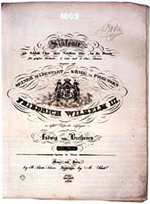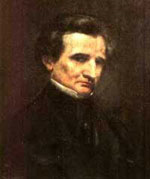Trivia
Orchestral music featuring the timpani
J.S. Bach: Christmas Oratorio
You may not have this impression of Bach, but there are a few of his compositions in which timpani plays an important role. The "Christmas Oratorio," written to commemorate the birth of Christ, the grandest festival celebrated by Christians, features one of Bach's most brilliant timpani passages.
The singing that expresses the joy of the birth of Christ can be heard in the choral song that begins the Oratorio, but the timpani parts used in the introduction of that song are suggestive of this joyful occasion.
The Oratorio is always performed before Christmas in Europe, mainly in German-speaking countries, and for some people the excitement leading up to the holiday is brought to mind just by listening to this timpani solo.
L. V. Beethoven: Ninth Symphony "Choral"
In the era of the Classicist composers, Beethoven was famous for his clever use of timpani. First of all, he flexibly adjusted the pitch of the timpani, which up to then had been fixed at intervals of perfect fourth and perfect fifth. His Symphony No. 7 features a minor sixth interval (A to F), and octaves appear in his Symphony No. 8 and No. 9. The timpani solo in the second movement of this Symphony No. 9 is particularly impressive and effective. Beethoven's innovative use of timpani, such as a timpani solo that starts off and is driven by a violin concerto, was generously praised even by Berlioz, one of the masters of orchestration that followed him.

Original score for the Ninth Symphony "Choral"
E. Berlioz: "Symphonie fantastique"
Berlioz also added many new ideas to the world of timpani performance, having lauded Beethoven's use of timpani in his works. His "Symphonie fantastique" with its famously lavish orchestration made use of four timpani at the end of the third movement, "Scène aux champs" to cleverly simulate the sound of rolling thunder from afar. Berlioz also innovated the use of timpani by featuring eight sets of timpani in a work and specifying the type of mallet within the score.

Hector Berlioz
G. Mahler: Symphony No. 2 ("The Resurrection Symphony")
Mahler's legacy of giant symphonies with a giant orchestra featured surprising use of the timpani. Symphony No. 2 is famous for its use of three timpanists.
One of the other remarkable characteristics of this piece is the use of the exceptionally low note "Des" (D-flat). Mahler, who was active all over Europe as a conductor and well versed in orchestral instruments, made revolutionary use of timpani in his other work as well, with many movements in his symphonies beginning with a timpani solo.
